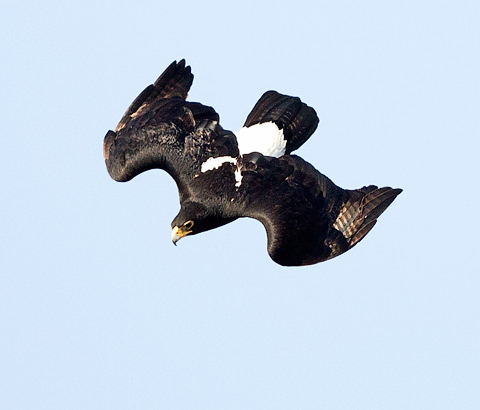Contributed by Marjorie Nuns of the Barberton Bird Club
On Saturday, 25 April 2015, Sandton Bird Club – taking advantage of the long weekend – joined Barberton Bird Club for a trip into the magnificent 18000 hectare Mountainlands Nature Reserve close to Barberton. To keep things manageable – as there were over 20 of us – we split into two groups. Dave Mourant took charge of the visitors and covered the Wonderscheur area and I covered the Dycedale area with the local bird club members. We arranged to meet for lunch and set off in different directions.
It was a later start than usual – as some of the visitors only left Sandton on Saturday morning and arrived after 8am – but it didn’t make too much difference to Dave’s group as they got off to a cracking start with a great close up sighting of Gurney’s Sugarbird on the Bulembu Road. Thereafter, the birding was pretty slow for both groups but the visitors were more than happy with regular sightings including African Goshawk, Buffstreaked Chat, Cape Batis and Brimstone Canary.
Things started off very slowly with my group as the Dycedale birds in the high lying areas tend to be late risers during the cooler months and only make an appearance when the sun is up and it warms up a little. However, no-one complained because it’s always wonderful just being in this incredible reserve and taking in the fantastic scenery. It was particularly special for me and hubby Andy because we hadn’t visited this side of the reserve for over a year – having been busy counting birds in the Low’s Creek area – and had almost forgotten just how beautiful it is.
After a very quiet morning, things improved considerably in Dycedale at precisely 11h45- at one of our regular stops – when Andy shouted ‘RAPTOR TO THE RIGHT”! And there it was …… we found ourselves gazing at the most magnificent Black Eagle (now called Verreaux’s Eagle) flying quite low and in fairly close proximity giving each and every one of us the most magnificent view of the white on its back, its yellow feet and the yellow on the bill. We couldn’t believe it – we knew what it was immediately but also knew that we were looking at something incredibly unusual because Black Eagles don’t occur around Barberton. According to Dr Dirks, the local boffin, as far as he can recall the last time a Black Eagle was recorded in the Barberton area was about 15 years ago and it was a once off sighting. Prior to this, it was probably around 30 years ago when they occurred mostly in the Nelshoogte area. Barberton Bird Club occasionally hears of a Black Eagle sighting but they have always turned out to be Long Crested Eagles.
When we eventually caught up with Dave’s group at lunch time there was lots of excited chatter from both sides and the visitors thought the reserve was absolutely breathtaking and all of them indicated they were having a great time in the reserve and they all loved Barberton! After an hour or so we continued in different directions with the visitors hoping for a glance of the Black Eagle on the way out. Unfortunately, they weren’t so lucky but what two of the group did see – which was also very exciting – was a sighting of Dassies in the same area!
So, all in all, it was a very exciting with Black Eagles and Dassies being recorded on the same day in exactly the same area. As Dassies are the Black Eagle’s favourite food – and there are lots of other good pickings in the Reserve in the form of birds and small mammals – this suggests these magnificent raptors could be around for while. Dr Dirks also mentioned that Dassies used to occur on the road to Pegglars Bush but that was also about thirty odd years ago. Barberton Bird Club has been visiting the Reserve regularly for the past 10 years but no-one has ever recorded Dassies but we understand that Nico Oosthuizen saw them in the Fourteen Streams area in the early 2000’s or thereabouts
We are not sure when these magnificent eagles arrived in Mountainlands but we have now recorded them in the same area for three consecutive months. Nico and Delia Oosthuizen also reported a single bird some before our first sighting on 25 April 2015 and Mr Oosthuizen Senior recorded a pair on 13 June 2015. We have only recorded a single bird on all three occasions so hopefully this could indicate that there is a nest somewhere because the timing is right as these birds breed from May until July. So, we will continue to scan the high rocky areas and hope to find a nest and spot ‘junior’ in the not too distant future!
We’ll keep you posted!
Image by Warwick Tarboton

